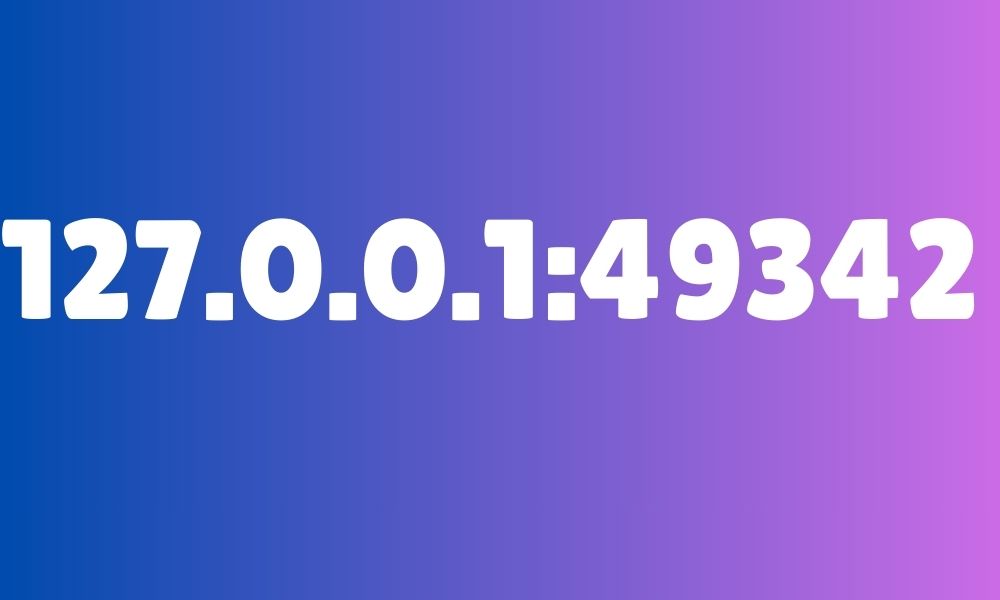Have you ever stumbled upon the address “127.0.0.1:49342” while tinkering around on your computer? It might look like a cryptic code from a spy movie, but fear not! This seemingly complex string actually holds a simple explanation. In this blog post, we’ll unveil the mysteries behind 127.0.0.1:49342 breaking it down into understandable terms and exploring its role in your computer’s world.
Understanding the Lingo: IP Addresses and Ports
Imagine your computer as a house on a giant street (the Internet). Every house needs a unique address to receive mail and visitors. In the digital world, this address is called an IP (Internet Protocol) address. It’s a series of numbers separated by dots, like 127.0.0.1, that identifies your device on the network.
Now, think of your house again. It likely has multiple doors (ethernet ports, Wi-Fi) for different purposes. Similarly, your computer uses ports to differentiate between various types of communication. These ports are designated by numbers, like 49342 in our case.
127.0.0.1: A Special Loopback Address
The first part of the address, 127.0.0.1, holds a special meaning. It’s a reserved address block known as the loopback address. This address isn’t like a typical internet address that points to an external location. Instead, it’s a clever way for your computer to talk to itself!
Think of it like an internal memo system. When your computer program tries to access something using 127.0.0.1, it’s not reaching out to the Internet; it’s simply communicating with another program running on the same machine. This is a handy way for programs to access local resources without needing a separate Internet connection.
What About Port 49342? The Mystery Deepens (or Does It?)
Here’s where things get interesting. The role of port 49342 isn’t as universally defined as the loopback address. Different programs or services might use this specific port for their internal communication. The challenge is that with additional context, it’s easier to pinpoint exactly what’s using port 49342 on your machine.
Here’s what we do know: Port numbers above 49151 are generally considered “dynamic” or “private.” This means they need to be pre-assigned for specific well-known services (like port 80 for web traffic). These dynamic ports are typically used by programs on your computer to establish temporary connections for various tasks.
Unveiling the Culprit: Techniques to Identify the Program Using Port 49342
While we can only definitively say what’s using port 49342 with more information, there are ways to investigate further. Here are a couple of techniques you can try:
- Resource Monitor (Windows) or Activity Monitor (Mac): These built-in tools provide insights into your computer’s running applications and network activity. Look for programs that show high network usage or have established connections on port 49342.
- Third-party Port Scanner Tools: Several free and paid software tools can scan your computer’s open ports and provide details about the associated programs. These tools can offer a more comprehensive view of port usage.
Is Port 49342 a Security Risk?
In most cases, a program using port 49342 likely poses no security threat. As mentioned earlier, it’s typically used for internal communication within your computer. However, if you’re concerned about unfamiliar programs accessing your network, it’s always a good practice to identify them and research their legitimacy.
Beyond the Basics: Advanced Loopback Uses
The loopback address (127.0.0.1) has some interesting applications beyond basic internal communication. Here are a couple of examples:
Conclusion
The world of computer addresses and ports can seem like a labyrinth at first glance. But by breaking down the components of 127.0.0.1:49342, we’ve unraveled its secrets. We’ve learned that the loopback address is a handy tool for internal communication, and port 49342, while not universally defined, plays a role in facilitating these connections.

